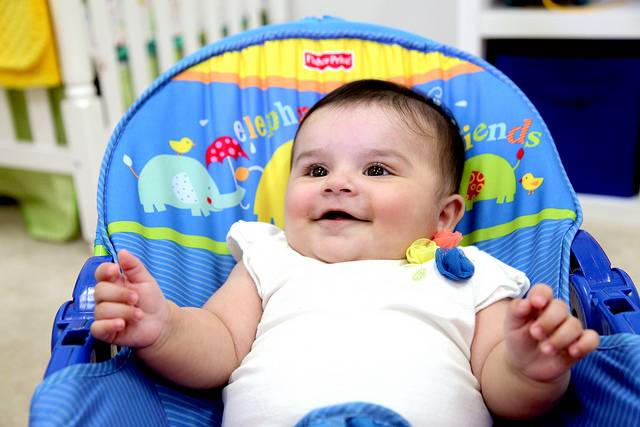Key points:
- Newborns have blurry vision and gradually develop better eyesight.
- Baby’s vision is crucial for learning about the world.
- Visual development in babies progresses from periphery to focusing on close objects and eventually grasping and tracking moving objects.
- High contrast black-and-white patterns can captivate a baby’s attention, but color vision fully develops around month five.
Have you ever wondered how baby eyesight develops? Keep reading to learn more about visual development, a subdomain of the Physical developmental area!
Your baby was born with the eyesight of between 20/200 and 20/400 –or the equivalent of being legally blind! They can see but in a very blurry way. But don’t worry, your baby’s vision will gradually improve.
Your child’s vision will actually be one of their main learning tools since it will allow them to take in all sorts of information about the world around them. Problems with eyesight can cause developmental delays, so make sure your doctor checks your baby’s progress at every visit.
Visual development in short
In the first few days after birth, your little one can only see out of the periphery, but your newborn’s not-that-great vision actually serves to protect them from overstimulation. Babies are sensitive to bright light, and because of this they usually open their eyes in low light.
Also, during the first month, babies will only be able to focus on objects less than 12 inches away from them! This is about how far the face of the person holding them is, which is mainly what they’ll be interested in anyway. So give your little one tons of face time, and watch them smile every time they catch a glimpse of your eyes! It is also normal for a baby’s eyes to be crossed the first two months, however, eye movements should be coordinated by month three and, at this age, babies will also start following moving objects with their eyes and reaching for things.
Other visual skills will be learned in the next few months. Depth perception —when your baby can see how far an object is— will develop fully around month five. This is part of the reason why it was hard for your baby to coordinate grasping an object or toy before this. They will soon start to get better at tracking moving objects and focusing their baby eyesight on things that are farther away from them.
Although your baby will appreciate high contrast black-and-white patterns during the first few months, you don’t have to limit their exposure to these colors. Babies can start to perceive color, but it is until the fifth month when they acquire good color vision; however, they can perceive certain differences between colors before that age. Still, black and white patterns will be mesmerizing for your baby, so don’t be surprised if you find them staring at a checkerboard or a bull’s eye.
Like any other skill, vision is learned over time and certain things can help it develop normally. If you have doubts or want to make sure your little one’s visual development is fine, you can take them to an optometric center when they’re around six months old for an eye examination.
Kinedu has plenty of activities to stimulate your baby’s vision. Here’s one for you to take a look at!









4 Responses
I like the helpful ihfo youu provide in your articles. I will bookmark your weblog
and take a look at again here regularly. I’m rather sure I’ll be informed lots
of new stuff proper here! Best of luck for tthe following!